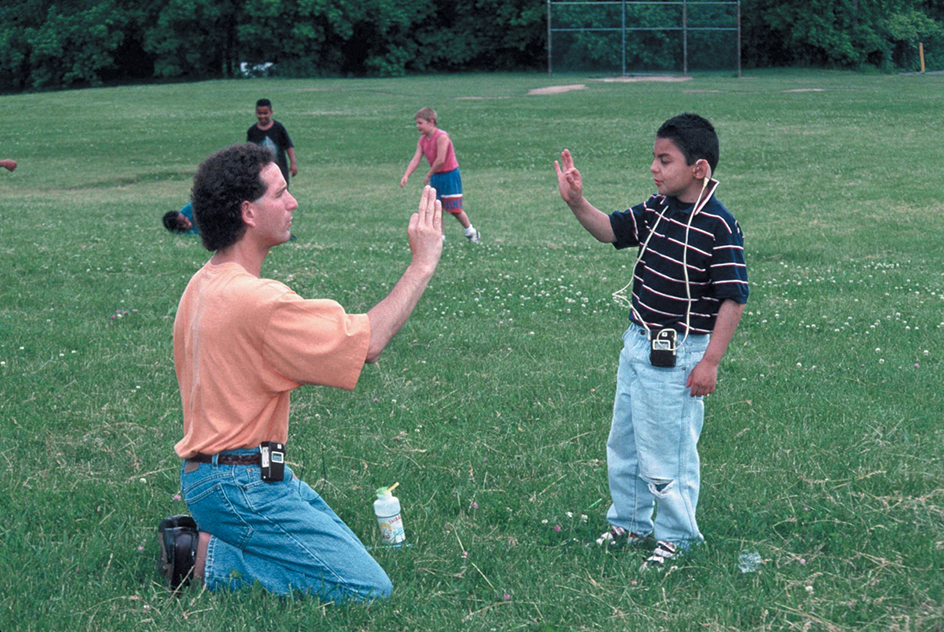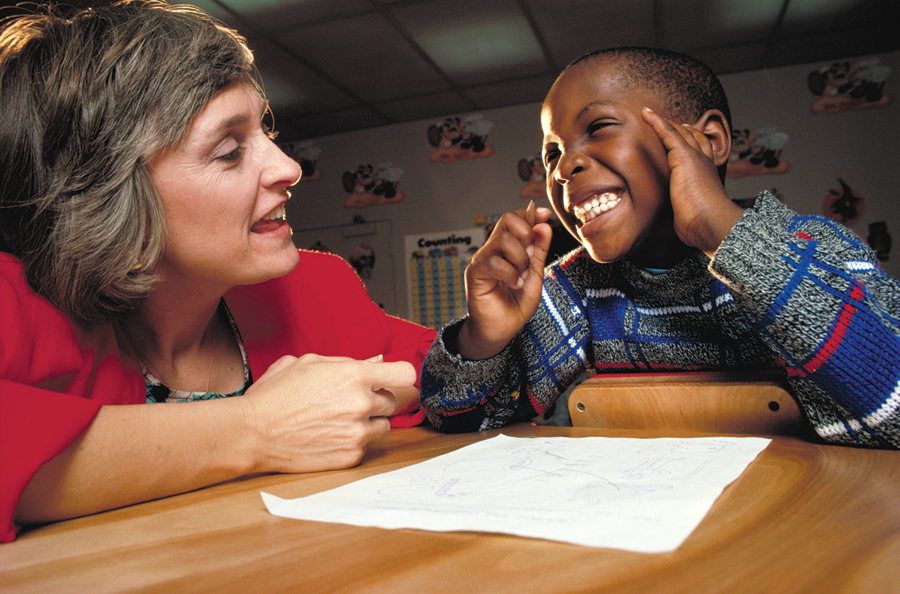Special education is instruction designed to help both disabled and gifted children use their full learning ability. The youngsters who need such education to get the most from school are called exceptional children.

In the past, many people thought that the best way to help children with disabilities was to wait until they were 6 or 7 years old to educate them and then educate them in classrooms or schools separate from nondisabled children. Today, however, most educators believe children with disabilities need special attention early in life. Most children with disabilities and children at great risk of being disabled receive educational services during the preschool years. Special education services for some children begin soon after birth.
Most educators also believe that children with disabilities and nondisabled children should be taught together whenever possible. Isolating children with disabilities may cause them to suffer from low self-esteem and may reduce their ability to deal with other people. In addition, nondisabled children can learn much about personal courage and perseverance from children with disabilities.
The practice of integrating children with disabilities into regular school programs is called mainstreaming. Students with disabilities attend special classrooms or schools only if their need for very specialized services makes mainstreaming impossible.
Many children with disabilities attend regular classes most of the school day. They work with a specially trained teacher for part of each day to overcome their disability. These sessions may be held in a classroom called a resource room, which may be equipped with such materials as braille typewriters and relief maps for blind students. Other students with disabilities attend special classes most of the day but join the rest of the children for certain activities. For example, youngsters with intellectual disabilities may join children who are not disabled for art and physical education.
In the United States, the Education for All Handicapped Children Act of 1975 and the 1990 amendments to the act support special education. They require the states to provide free special education for all children with disabilities from birth to 21 years of age. The act also directs that these children be taught in the “least restrictive environment” possible, given their special needs. About 7 percent of the nation’s children need special education because they have physical or mental disabilities or are emotionally disturbed. Between 3 and 5 percent of U.S. children could benefit from special education programs because they are gifted. Federal law encourages the states to establish programs for gifted children. In Canada, each province establishes its own guidelines for special education programs.
Children with physical disabilities
may be unable to walk; have difficulty hearing or seeing; or have such illnesses as kidney failure, cancer, or heart disease. Many need special education only part of the time because, with certain equipment, they do well in regular classrooms. For example, a child in a wheelchair may need a desk that has been altered and laboratory equipment that is placed at a level the child can reach. Children with poor vision may require books that have large print.
Other physical disabilities may require especially intensive instruction. Deaf children, for example, need training to learn lip reading and sign language. Many blind children learn braille. Children with physical disabilities often can participate with the nondisabled when they are taught to use computers and other computer-based instruments. These devices allow children with physical disabilities to communicate efficiently.

Children with mental disabilities
may have an intellectual disability, or they may have normal intelligence but be hampered by a learning disability.
Children with intellectual disabilities
learn more slowly than other children. Educators have designed special programs to teach students with mild intellectual disability such subjects as reading, writing, and arithmetic. Children with moderate or severe disability must have special training to prepare them for employment and for caring for themselves and their homes when they become adults.
Children with learning disabilities
may have average or even superior intelligence, but they have great difficulty mastering certain skills. Most learning disabilities result from minor dysfunctions (abnormalities) of the central nervous system. Such dysfunctions interfere with the brain’s ability to use information transmitted by the senses.

Many children with learning disabilities have extreme difficulty learning to read, spell, or write, or to solve arithmetic problems. Others are hyperactive. They cannot sit still in class and have trouble controlling their behavior. Most such children succeed in regular classes if given special help to overcome their disabilities.
Children with emotional disturbances
have great problems relating to other people in socially acceptable ways. Some children with emotional disturbances are withdrawn and may not even speak to other people. Other troubled students may argue, fight, or otherwise disrupt classroom activities. Some emotionally disturbed children should be hospitalized for psychiatric care. However, many of these children are able to attend regular schools if they receive special education and psychological counseling.
Gifted children
may be unusually intelligent or have exceptional ability in art, mathematics, or another area. Special education helps such children develop their talents while they get a well-rounded education. Many schools provide special activities and materials that encourage gifted children to develop at their own rate in regular classrooms.
